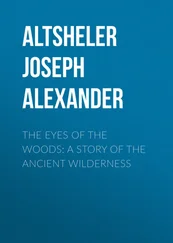1 ...6 7 8 10 11 12 ...31 What is not speculation but fact is that the parts of the body covered with hair are prominent, most notably the head, hence the mind. If the most distinctive feature of humans is intelligence, then the locks on their head are an indication of that. They are like a microcosm. The beard clearly has a demarcation function: men have beards and women do not, so, in a manner still under debate, that is an indication of gender. Science tells us that chest hair betokens the presence of androgens, while underarm hair suggests a vestigial role for odour in the life of the species.
In folklore, mythology, and poetry, hair in that part of the human body directly serving procreation may be called a grove, a forest, or a meadow in the forest. In a recent article, Andrey Lebedev analyses a passage about the Naassenes in that great work by Hippolytus (born before 170 AD, died 235), Refutation of All Heresies. 5‘Naassenes’ is the Hebrew name for the Ophites, of whom there were several varieties in the second century. The belief they held in common was that Jehovah had created only the material world, transient and illusory, and that man would have been left mired in it and blundering about for eternity but for the revelation of the serpent, ὄΦισ, of which in the first book of the Pentateuch of Moses it is said that it first opened man’s eyes to the abyss of the spiritual, by enabling him to discriminate between good and evil. 6The serpent, however, did not show the way, and it was for this that Christ came, the Light of the material world. Refuting the Ophites, Hippolytus paraphrases their teachings about mystical descents to earth which, incidentally, follow the paths of Aphrodite and Persephone.
It seems to me intuitively – and that is all one can say until Lebedev’s new etymologies of the forest are published – that wood-as-fire points us in a direction we need to think about. In his second article, while agreeing with attribution of the fragment about the sacred grove of Aphrodite to Empedocles, I would have argued with Lebedev’s approach. In my opinion, it is a dead end when it separates the physiological, embryological, and anthropogenic realities in the thought of Empedocles from the philosophical and poetic metaphor: Lebedev thinks that scientific positivity requires remaining down to earth, and believes that, in talking about the meadows and groves of Aphrodite, Empedocles ‘is describing metaphorically the female genitals’.
The tenacious, supposedly objective scholarly distinction between physical realia and poetry is neither self-evident nor factual. It proceeds from a questionable academic mythology that tries to distinguish what is a legitimate object of scholarly study from what is not. For example, the poetic. The delusion that anything properly scholarly and technical must be readily open to study betrays a blindness scholars allow themselves. We are not going to indulge in this blindness. […] 7The supposed encompassing of the world by science and technology encompasses nothing. Their victory is a myth, and the scholarly euphoria over the triumphs of technology is no better than the delight of one of Leo Tolstoy’s characters, a three-year-old girl who sets fire to hay in her log hut and invites her little brother to admire the splendid stove she has managed to light. 8All will be restored to what is dismissed as ‘poetic’, to the ‘gentle power of thought and poetry’. 9
The meadow, the sacred grove, the forest in folklore and mythology, in poetry and philosophy, are in no way a mere metaphor for coyly referring to vulgar realia. We first understand the forest in industrial and aesthetic terms, and are then unable to find a better way of understanding the grove of Aphrodite than as a metaphor, a discreet euphemism, perhaps veiling with a fine phrase a nakedness we find embarrassing. Art has the ability to show nakedness in a way that makes it neither metaphorical nor physiological. Can words be similarly used to name the intimate? Indeed they can, and are, using metaphors like grove and meadow, ἄλσος and λɛιμῶν, between which Lebedev and other writers he refers to see ‘a close association … in sacral contexts’. For Empedocles, a grove is not a metaphor for Aphrodite because, as Lebedev himself points out, he sees that the earth itself is a uterus, the womb of humankind. Lebedev mentions Empedocles’ enthusiastic cult of Aphrodite. The grove or meadow of Aphrodite is not some ‘biological referential signifier’ for us, and neither is alsos a ‘metaphor for the reproductive organs in general conceived as a “holy precinct” with a walled temple-uterus inside’, but rather quite the opposite. The biological referent, if present at all, is referring to the forest as something primal, as matter, as something maternal. Lebedev speaks of the sacred Temple of Nature in pre-Platonic thought, when its sacramental mystery is the formation of the embryo, the focal secret of life and of nature. It is a secret hidden from the profane gaze of ordinary men, but not from the probing insight of the philosopher proceeding along the path of mystical initiation. I would like to read in its entirety the remarkable conclusion of this article, which, as is often the case with Lebedev, opens up much broader perspectives than the primitive positivism about which I have been complaining.
For our present purpose, it is important to notice that typologically alsos Aphrodites represents a variation on the theme of Templum Naturae, a recurrent topos in pre-Platonic thought. Here it probably connotes ἄβατον ἱɛρόν: the formation of the foetus conceived as a mystery of life is hidden from the sight of the polloi, but not from the intellectual eye of a philosophical epoptes. Thus the mystery initiation motif, prima facie eliminated from the fragment together with the Gnostic interpretation, is eventually restored as authentic, though in essentially different form: it has nothing to do with the mysteries of Persephone and Diesseits-Hades of the Naassenes, but relates to the philosophical rite of passage. The metaphorical complex of secret knowledge is well attested in Peri physeos. As a philosophical mystagogue, Empedocles leads Pausanias to the innermost sanctum of nature: the embryological treatise to follow upon the prefatory verses on the anatomy of the female genitals and reproductive organs will reveal to Pausanias the secrets of birth no mortal eye has ever seen. And the same metaphor conveys the fundamental idea of the holiness of life inherent in Empedocles’ philosophy of cosmic Love. 10
So it will be difficult for us, too, as we enter into our new topic of the forest not to follow the mass of the polloi; we shall proceed with caution.
Perhaps the first objection we anticipate, and to which it is important and helpful to respond, is that scientific positivism, whether secondary or not, is what we are familiar with. However, to see the grove and the forest as something sacred and mysterious, we need a trained, discriminating eye. Seeing the forest other than from a commercial or aesthetic viewpoint would not seem to call for preliminary training. People talk about getting lost in the forest. We have the saying that someone ‘could get lost among three pine trees’; or, when baffled, we talk of being ‘in a dark forest’. May the explanation of this – that you cannot see far in a forest, that there are no familiar landmarks – be only a rationalization of an experience that in various guises many people have probably had, namely that being in a forest takes us out of metric space? The presence of trees, being among them, instils, or induces, or lulls us into a sense of – the range of vocabulary itself points to the singularity of the experience – something that does not lend itself to description. What the forest says to us – and the expression ‘trees can talk’ is yet another attempt to characterize the experience – causes a person to become confused and disorientated in more than a narrowly geographical sense.
Читать дальше












